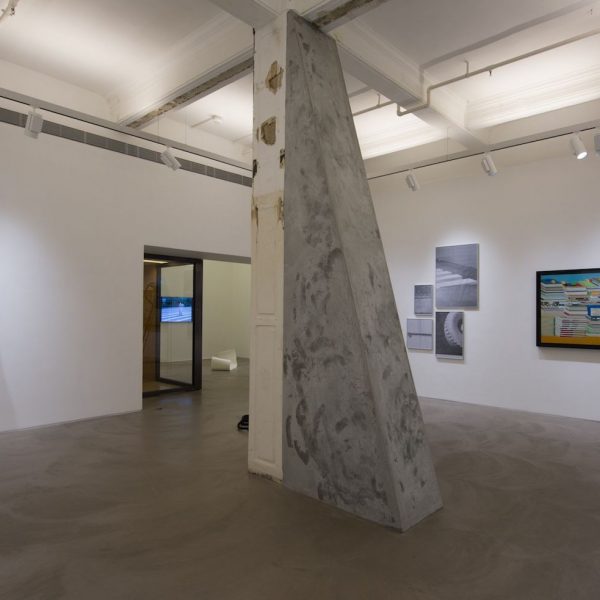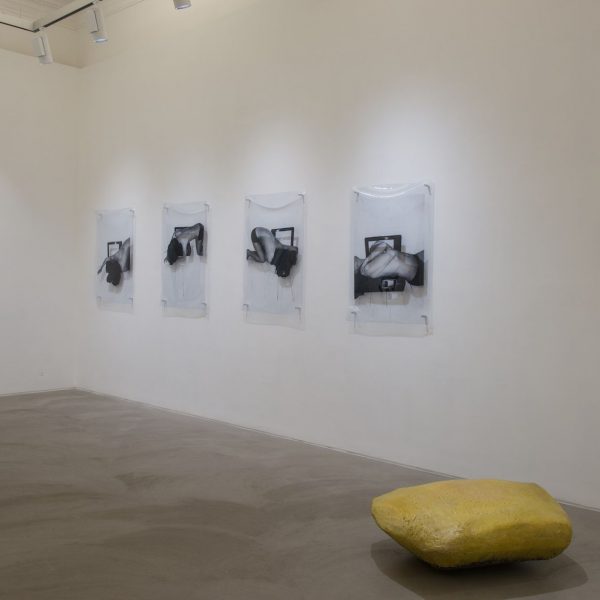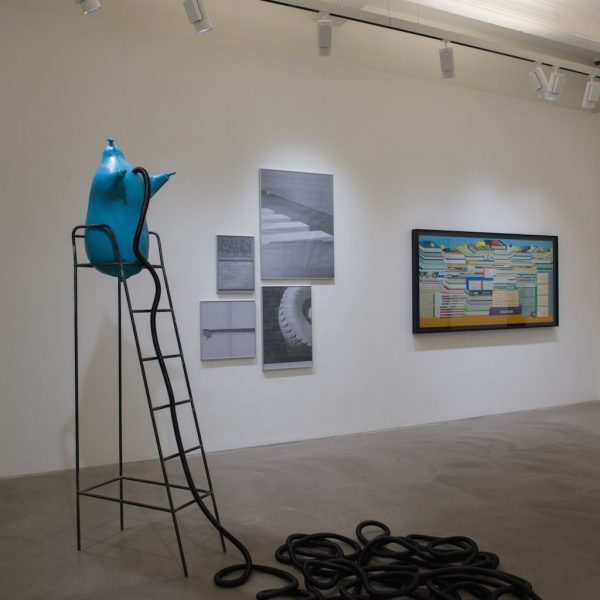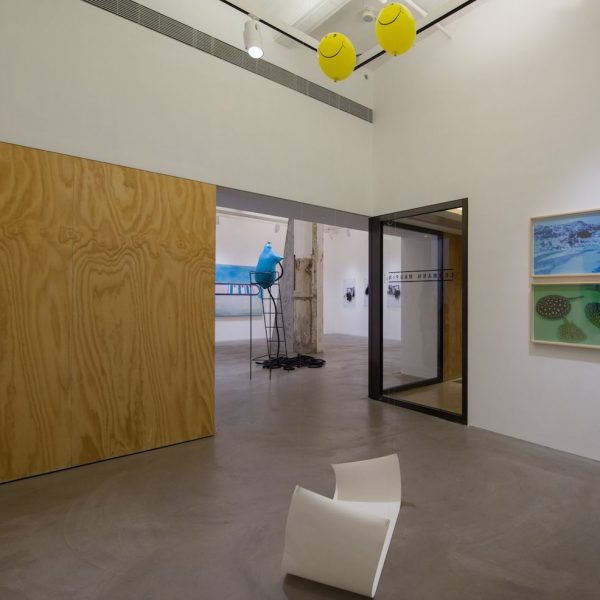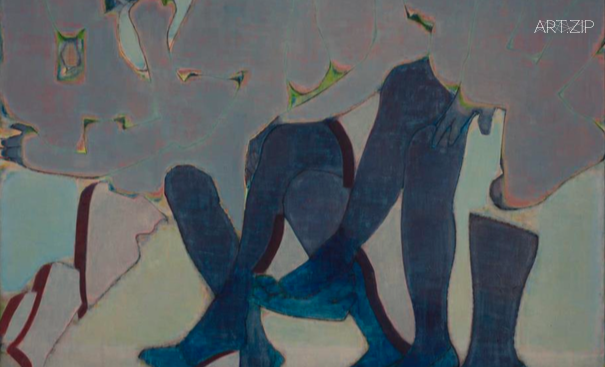
Curated by Liu Wei and Li Bowen
劉韡及李博文策展群展
.
July 9-August 22, 2015
2015年7月9日至8月22日
407 Pedder Building, 12 Pedder Street, Central, Hong Kong
香港中環畢打街 12 號畢打行 407 室
.
Hong Kong, June 29, 2015—Lehmann Maupin Hong Kong is pleased to present Nocturnal Friendships, an exhibition that examines various forms of friendship and considers the idea of friendship in relation to desire, the erotic, and death. Curated by acclaimed artist Liu Wei and Li Bowen, the exhibition features the work of Chinese artists Hu Xiangqian, Peng Jian, Tang Yongxiang, Tant Zhong, Yu Ji, Zhang Ruyi, and Zhu Tian.
The exhibition theme stems from Treatise on Friendship, the Roman philosopher Cicero’s Latin text from 44 BCE. Depicted in Pontormo’s painting Portrait of Two Friends, Treatise on Friendship explores Cicero’s personal experiences with friendship, outlining what makes a good friend and conversely a bad one, the importance of virtue in friendship, and how one is affected by the death of a friend. Indeterminate areas of friendship are suggested by use of the word “nocturnal” in the exhibition title, which is taken from German philosopher Friedrich Nietzsche. Nietzsche proposed that by wishing you the “best” in life, a true friend actually wishes you the “worst” — including strife, struggle, and obstacles. By comparison, “nocturnal friendships” manifest themselves as insignificant relationships, or those without substance or foundation. Together the artworks in the exhibition articulate the concept of “nocturnal friendship”. While all demonstrate their own unique language, they are in dialogue with each other through various commonalities, such as ideas of absurdity, the interaction of the natural with the man-made, and how humanity operates within a larger mechanical society.
In curating this exhibition, Liu Wei and Li Bowen have selected the work of seven young artists, all born in Mainland China, whose practices range from performance to abstract sculpture. They include:
Hu Xiangqian is inspired by current events and his own surroundings, and documents his performances in video or photography. The artist’s works often convey some sort of journey or transformation, usually pointing out an absurdity or conflict within society. In one of his best-known works, Hu Xiangqian documents his attempt to run for mayor of his hometown. In the video Two Men (2008), the artist dances joyfully with another man, examining the impact of friendship and brotherly love.
Peng Jian deliberately merges Western and Chinese painting traditions, approaching the Song Dynasty ruled-line architectural painting style with a contemporary aesthetic. Applied here to books rather than buildings, his still life Mountain within Mountains (2014) depicts Chinese texts, Rubik’s Cubes, and various other signifiers of the relationship between the East and West, giving them an abstract and weightless quality.
Tang Yongxiang’s meticulously layered paintings address the idea of concealment. This appears through the combination of visually covering parts of images and revealing others, reorganizing and liberating certain fragments; these depictions parallel the idea of obscuring judgment and ideology that underlies his works. In A Lot of Dark Blue Legs and Patches of Color (2015), multiple pairs of women’s legs span the canvas, yet the concealment of the rest of their bodies removes any erotic context or individuality.
While not willing to classify her work in a particular genre, Tant Zhong pays homage to conceptual art, vividly questioning what it means to produce an artwork. Using her photographs as a way to express a moment of her experience in the world, she gives attention to the rarely addressed or neglected elements of society. In the series Double Click (2014), pairs of photographs show the same image, yet each from a slightly different perspective, testifying to their respective individuality and relationship to one another.
Yu Ji considers the installation of her minimal and abstract sculptures a performance that the viewer will later encounter. Created from cement and iron, Petal (2014) and Flesh in Stone #4 (2014) have anthropomorphic qualities; the industrial materials contrast the sculptures’ organic forms, existing in a transient state between natural and man- made.
Zhang Ruyi’s mixed media works on paper are extensions of her site-specific sculptures, for which she is best known. Though highly structured, using grids and matrixes, Zhang Ruyi’s work incorporates abstract organic forms, bringing an element of humanity into the composition. Her concrete sculptures, often blocking doors or windows, alter the architectural space in which they are placed. By cutting off or redirecting the paths that humans rely on to connect with the outside world, she questions the necessity of social interaction.
Often bordering the absurd, Zhu Tian’s sculptures and performances convey a mixture of humor and provocativeness. Even the materials she uses waiver between seductive and off-putting. Concerned with the division of power in a relationship, she also addresses the idea and reality of freedom and individualism. The series Scan (2014) features the artist half nude, contorted into various poses over a scanner on a wooden floor. However, her actions don’t appear to be purpose driven or make sense; it is the artist’s intention for her work to be an interruption or disruption in the viewer’s everyday thought process.
.
香港,2015年6月29日──香港立木畫廊(Lehmann Maupin Hong Kong)由知名藝術家劉韡及李博文 策展的群展《夜間的友誼》,探討友誼的不同模式,以及友誼跟思考與慾望、情色及死亡的關係。本展將展出多位中國藝術家的作品,包括:胡向前、彭劍、唐永祥、鐘雲舒、于吉、張如怡及朱田。
是次展覽的主題以 Pontormo 的作品《Portrait of Two Friends》為靈感,Pontormo 的作品來自公元前 44 年羅馬哲學家 Cicero 的拉丁文文本《友論》(Treatise on Friendship)。正如 Pontormo 在作品中所描繪的, Cicero 的《友論》探索了作者本人在友誼方面的親身體驗,勾勒了益友與損友,闡明了美善對友誼的重要性,以及好友離世對人帶來的影響。策展人以展題中的一個「夜」字,暗示了友誼中的種種不確定性。展題擷取自德國哲學家 Friedrich Nietzsche,他指出,真正的朋友對你作出良好祝願的時候,其實正在祝願最糟糕的事情──包括紛爭、掙扎與阻礙。相較之下,「夜間的友誼」往往被視為次要,或缺乏內涵與基礎的關係。展覽中的多件作品均採用了各自的藝術語言觸碰到「夜間的友誼」的概念,就荒誕性、自然生成物與人為物之間的互動,以及人性在機械化社會中的體現等共同議題,進行對話交流。
作為本展覽的策展人,劉韡和李博文選擇了展示七位生於中國大陸的年輕藝術家作品,形式涵蓋表演藝術 及抽象雕塑等:
胡向前當下社會事件以及藝術家周遭環境為基礎進行表演行為並以錄像或攝影記下其演出的片段。其作品往往有著強烈的歷程性,圍繞轉變展開敘事,並將注意力集中於了社會中的荒誕或衝突之上。在其中一件最廣為人識的作品中,胡氏更記錄了自己參選家鄉市長的經歷。而其錄像作品《兩個男人》(2008 年)則 記錄了他與另一男性歡然起舞的片段,藉此探討友誼與兄弟之情的關係。
彭劍刻意糅合了中西繪畫傳統,將當代美學標準與宋朝的建築繪畫風格互相結合。他將其更多地運用於書本而非建築物上,如靜物畫《山內山》(2014 年),他筆下的線裝本古書、魔方及其他象徵東西文化關係 的物件,恰如其分地營造出抽象而輕柔的質感。
唐永祥精心地以多層次的繪畫表達藏匿的概念。通過將不同物件若隱若現地結合展示,把不同的片段重新排列、釋放,使得作品中含糊不清的價值判斷和意識形態相映成趣。其作品《好多深藍色的腿和一些色 塊》(2015 年)中,多對女性雙腿佈滿畫布,然而身體的其他部分卻始終被遮蔽隱藏,使得作品脫離了與情色或個人意味的聯繫。
鐘雲舒拒絕以特定形式將自己的作品歸類,卻也在作品形式上向概念性藝術致敬,並生動地向藝術創作的真正含意提出質問。鐘氏以其攝影作品表達她在世上所經歷的片段,關注那些鮮被提及或常被忽略的社會元素。作品系列《按兩次快門》(2014 年)並置了關於同一景象的卻有著微弱差別的兩張照片,凸顯彼此 之間的絕對獨立性與相連性。
于吉的作品《瓣兒》(2014 年)與《石肉 #4》(2014 年)以不同的程度創造了一種別樣的身體型態。而純自然的蜜蠟或工業化的水泥、鋼鐵物料正與雕塑本身的有機型態構成了由不同的距離所控制的關係,存 在於自然與人為之間的過渡狀態中。
張如怡的特定場域雕塑作品廣為人知,而她的紙上混合媒介作品可被視作是該系列理念的延伸。張氏的作品結構嚴謹,大量採用格線與矩陣,並將抽象的有機型態糅合其中,令創作更添人性化色彩。其混凝土雕塑作品往往安排在阻擋門窗的位置,改變了其所處空間的建築面貌,透過切斷或重新引導人類賴以連結外 界的途徑, 她的裝置作品向社交互動的必要性提出了詰問。
朱田的雕塑及表演作品將幽默與聳動性相結合,遊走在荒誕的邊緣。她所運用的創作材料亦徘徊在誘人與讓人不安的兩極之間。她的作品關注關係中的權力劃分,亦觸及自由和個人主義的理想與現實議題。在作品系列《Scan》(2014 年)中,藝術家在一台掃描儀上方,擺出各種扭曲的姿勢掃描自己的裸身。儘管荒誕,这是藝術家旨在讓其作品成為觀眾日常思考過程中的阻隔與擾亂。

